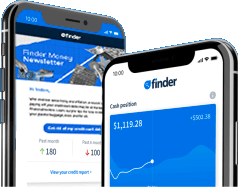How has COVID-19 affected small businesses?
The coronavirus pandemic has had an enormous impact on small businesses. According to a report by the Federal Reserve, 95% of businesses said that the pandemic affected their operations. During the past year, more businesses have had to turn to Small Business Administration (SBA) loans in the hopes of keeping their business afloat.
About 91% of employer businesses said they sought emergency assistance funding, according to a report by the Federal Reserve. Meanwhile, the number of firms that sought non-pandemic-related emergency funding was down, with only 37% of firms seeking financing in 2020, down from 43% in the 2019 survey.
How much do small business owners borrow?
The rate of small business owners looking for a loan might be on the decline, but they still borrow a lot: $645 billion in 2019, according to a 2020 report by the Small Business Administration (SBA). That’s several billion more than Sweden’s GDP. Not including other types of financing like equity investments or buyouts. And given that the Paycheck Protection Program (PPP) program in response to the COVID pandemic has loaned about $800 billion so far, the total amount lent in 2020 is sure to be higher.
That doesn’t mean that American business owners are running around with million-dollar loans. The average size of all business loans was $663,000 in 2017, according to the Federal Reserve. Though most business owners borrowed even less — especially outside of large commercial loans. More than half of all business loan applicants applied for $100,000 or less.
Businesses looking for larger loans played it safe with tried-and-true financial institutions: banks. Online lenders and peer-to-peer marketplaces were popular for smaller loan amounts, however.
Average loan size by lender type
Lender type | Average business loan size | Average business size for loan backed by the SBA |
|---|---|---|
Large national banks | $593,000 | 59,000 |
Small national or regional banks | $146,000 | 165,000 |
Domestic banks | $491,000 | 107,000 |
Foreign banks | $8,512,000 | N/A |
All banks | $663,000 | 107,000 |
Source: Survey of Terms of Business Lending by the Federal Reserve
What types of costs do small businesses need help covering?
Covering operating expenses was the most common reason business owners applied for a loan in 2020 — what you might expect in an economy impacted by pandemic-related shutdowns. According to the Federal Reserve, over half of businesses that sought financing did so in order to cover operating expenses such as their rent or mortgage payments and wages.
Compared to previous years, fewer small business owners take out loans to expand their businesses. Only 38% of business owners applied for a loan in order to expand their business in 2020, compared to 56% in 2019.
Low interest rates and government programs may have also encouraged business owners to refinance for a better deal. 32% of business owners applied for a loan in order to refinance or pay down debt in 2020, compared to 30% in 2019.
Most common borrowing reasons
Borrowing reason | 2020 | 2,019 |
|---|---|---|
Cover operating expenses (including wages and rent) | 58% | 43% |
Invest in a new opportunity or expand | 38% | 56% |
Refinance or pay down debt | 32% | 30% |
Replace capital assets or make repairs | 22% | 18% |
Source: Federal Reserve’s Small Business Credit Survey: 2021 Report on Employer Firms
Banks are still the first place small business owners look for financing
Forget what you’ve heard about fintech companies making banks a thing of the past. Banks, large and small, still dominate business loans, and it doesn’t look like they’re going anywhere any time soon. Some 42% of small business owners applied for a business loan at a large bank in 2020 and 43% applied for a loan at a small bank. Online lenders only got about 20% of business loan applications, down from 33% in 2019.
Other types of lenders only accounted for a small piece of the business loans pie. About 9% of business owners applied for a loan at a credit union and 3% went to a Community Development Financial Institution (CDFI). It makes sense: Both are usually small operations that don’t have the money to serve more than their communities. Banks also just have more recognition — raise your hand if you can name a CDFI near you — or even know what one is.
Lender types applied to for business loans
Lender type | Percent of business owners who applied |
|---|---|
Large banks | 42% |
Small banks | 43% |
Online lenders | 20% |
Other lenders | 15% |
Credit unions | 9% |
CDFI | 3% |
Note: Percentages may sum to more than 100% since respondents could select multiple options. Does not include emergency funding applications.
Source: Federal Reserve’s Small Business Credit Survey: 2021 Report on Employer Firms
Approval rates
Banks might be a popular place to apply for a business loan, but approval rates tell another story. The type of financing a business is applying for — and whether it’s backed by collateral — can also affect the odds of approval. Moreover, because a business was approved for a loan doesn’t mean it got the maximum amount of funds it applied for — that number is usually lower.
By loan type
Turns out collateral sometimes can help a business get approved for a loan. Auto and equipment loans had an 87% approval rate in 2020. Merchant cash advances, which businesses repay with a percentage of each credit card swipe, clocked a close second at 84%.
But lenders only approved 65% of SBA loan applications, loans backed by the government, business owners and sometimes even collateral. SBA loans might be designed for businesses that have struggled to get a loan somewhere else, but they come with their own winding list of eligibility requirements that look into everything from a business owner’s personal assets to past run-ins with the law.
Approval rate by loan type
Loan type | Approval rate |
|---|---|
Auto or equipment loan | 87% |
Merchant cash advance | 84% |
Business line of credit | 71% |
Home equity line of credit | 70% |
Mortgage | 69% |
SBA loan or line of credit | 65% |
Business loan | 57% |
Personal loan | 43% |
Source: Federal Reserve’s Small Business Credit Survey: 2021 Report on Employer Firms
By lender type
Before March 1, 2020, finance companies had the highest approval rates with an acceptance rate of 88%, beating banks and online lenders. After March 1, 2020, approval rates dropped across all lender types. Afterwards, small banks had the highest acceptance rate at 67%, while the acceptance rates for finance companies dropped to 64%. Online lenders saw the biggest drop, falling from an acceptance rate of 81% pre-pandemic to 55% during the pandemic. And when it comes to banks, you’re better off going local — small banks accept business owners at a rate 9% higher than larger institutions after March 1, 2020.
Approval rate by lender type
Lender type | Approval rate before March 1, 2020 | Approval rate after March 1, 2020 |
|---|---|---|
Large bank | 69% | 58% |
Small bank | 85% | 67% |
Online lender | 81% | 55% |
Finance company | 88% | 64% |
Source: Federal Reserve’s Small Business Credit Survey: 2021 Report on Employer Firms
How else do Americans borrow for business?
Business loans aren’t the only way to pay for business expenses. With unexpected pandemic-related financial challenges, business owners’ had to get creative with how they kept their business going.Some 63% of business owners said they did not draw a salary or reduced their salary in response to financial challenges brought about by the pandemic, while 51% of business owners paid business expenses with personal funds.
More than a fifth of business owners (21%) borrowed money from their family or friends — popular sources for smaller expenses to pay back quickly.
Other ways Americans borrow for business
Effect on business owner’s personal finances | % of business owners |
|---|---|
Did not draw a salary or reduced salary | 63% |
Paid business expenses with personal funds | 51% |
Concerns about personal credit score or loss of personal assets due to late payments | 26% |
Borrowed funds from spouse/other family or friends | 21% |
Borrowed against home or retirement account | 16% |
Worked a second job or extra hours outside of this business | 14% |
No challenges or impact on personal finances | 20% |
Source: Federal Reserve’s Small Business Credit Survey: 2021 Report on Employer Firms
5 tips to make taking out a business loan worth it
- Take the time to compare lenders. It might be tempting to go with the first lender you come across, but your business could end up saving on interest and fees by finding a loan that fits your needs.
- Watch your spending. You might feel flush with cash after getting a business loan, but letting your spending get out of hand could lead to overspending and put you out of business.
- Have a budget. Budgeting out how your business plans to spend the loan can make it a lot easier to keep track of expenses and ensure you can afford your loan payments when they’re due.
- Sign up for autopay. Automatic payments can save you more time and brain space than you’d think. Plus, some lenders might even offer a discount on interest — though this is more common with personal loans.
- Have a separate account for your loan funds. This trick can help you prevent overspending and keep track of where the funds go.
Bottom line
We’re living in a time when businesses have had to rely on loans and grants more than ever before — and the business loans numbers show it. More businesses felt like they had to take out a loan just to stay afloat in 2020 than in the past, with the most common reason for borrowing being to cover operating expenses including wages and rent.
Want to learn more about business financing? Check out our guide to business loans to find out how it all works.

For all media inquiries, please contact:
Richard Laycock, Insights editor and senior content marketing manager
Ask a question


How many loans were issued in these years (versus the number of loans outstanding)? Thanks!
Hi JB,
Thanks for getting in touch with Finder. I hope all is well with you. :)
I can’t provide you a straightforward answer, JB since we don’t have this on our page. It is also a bit complicated to know how many loans were issued for the past few years since there are many types of loans ranging from payday loans to home loans. However, it is safe to say that loans for each year would amount to trillions and there would also be thousands of loans issued from different sources.
You may also do your independent search, JB. You can start by searching the Internet.
I hope this helps. Should you have further questions, please don’t hesitate to reach us out again.
Have a wonderful day!
Cheers,
Joshua